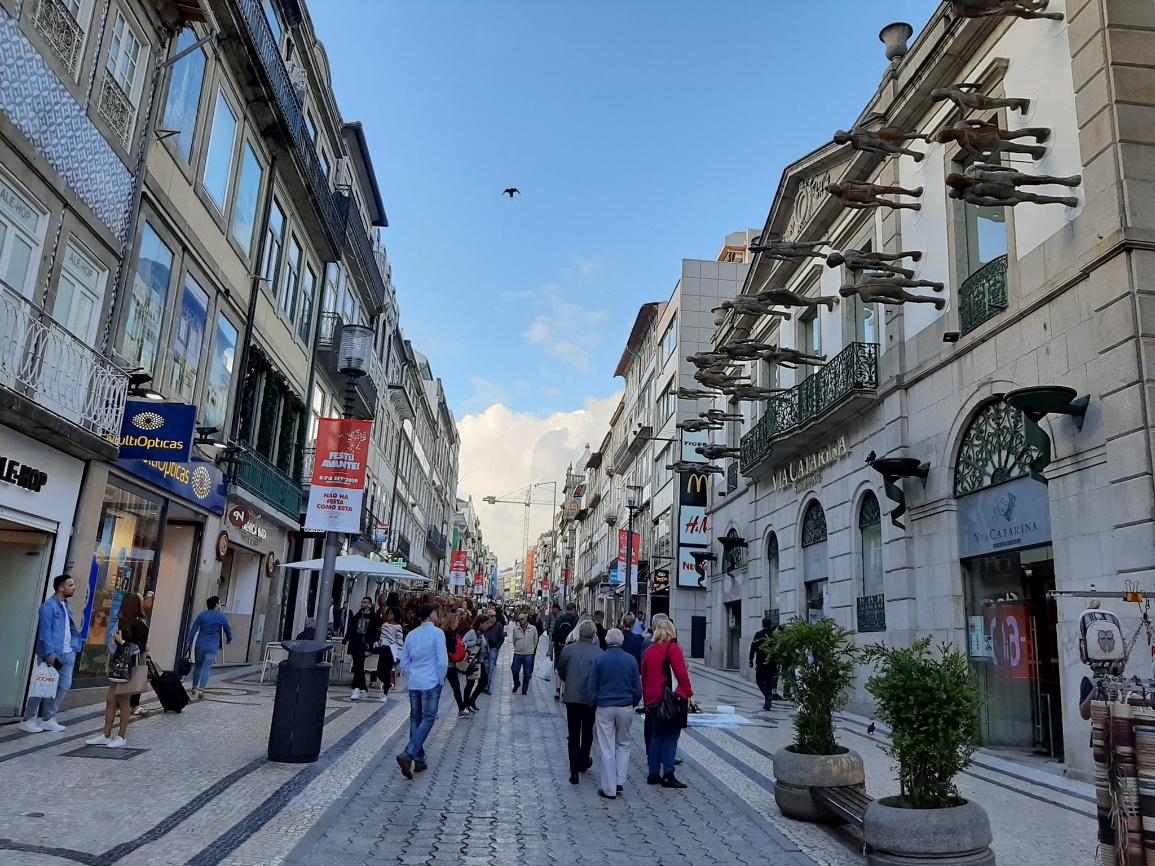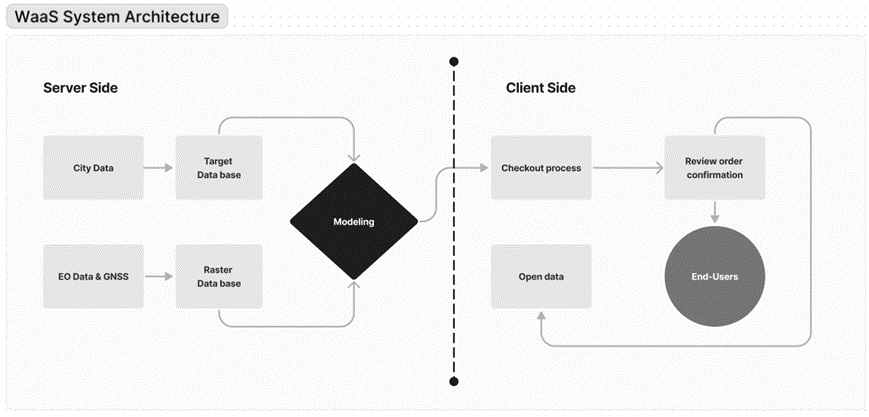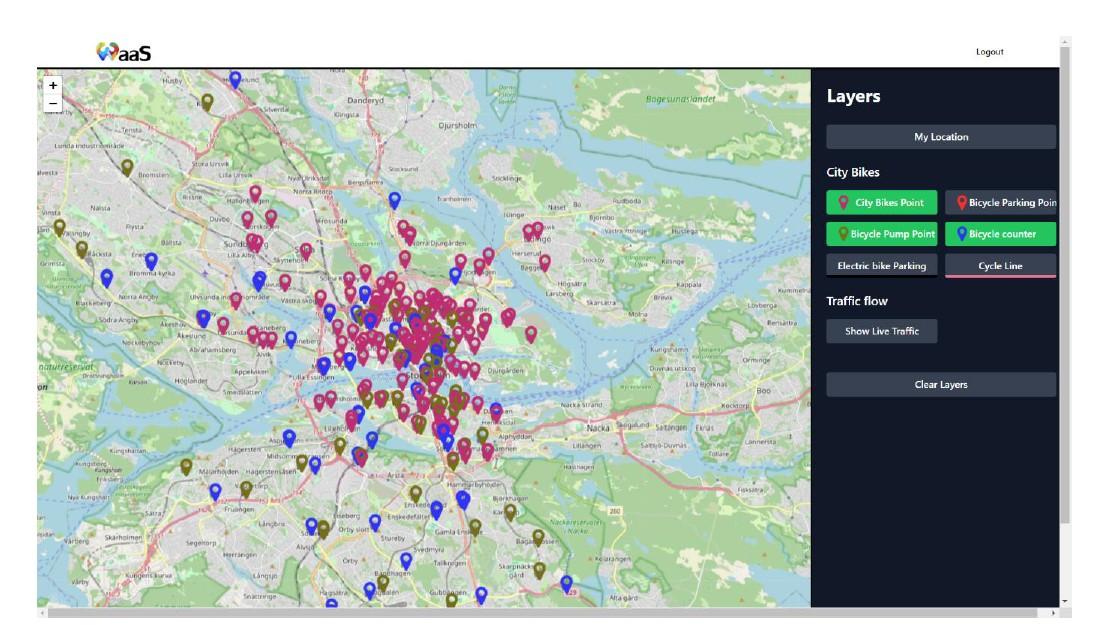
Objectives of the service

The growing demand for climate-friendly transportation options and the increasing focus on health, happiness, and wellness have created a need for innovative solutions that promote sustainable and accessible urban mobility. Walk as a Service (WaaS) is a service that aims to address this challenge by positioning walking and micro-mobility as a convenient, accessible, and appealing choice for short city trips (the concept of a '15-minute city'), harmonized with other transport modes. WaaS is envisioned as a comprehensive micro-mobility ecosystem that integrates various modes of transportation, including electric bicycles, cycling infrastructure, and scooters, and walkability. The WaaS platform is revolutionizing the urban walking experience, offering seamless integration and enhanced user-friendliness. In the sphere of urban management, the WaaS project is a direct response to prevalent challenges, notably addressing urban clutter caused by shared micro-mobility devices in public areas. Concurrently, it supporters sustainable mobility and elevates walkability in urban space.
Users and their needs
WaaS is highlighting their commitment to fostering an inclusive experience and identifying opportunities to promote Micro mobility modes to a broader audience within EU cities. Municipal and governmental entities utilize WaaS as an integrated platform aimed at enhancing the quality of urban life for citizens and end-users, effectively managing the Micro mobility ecosystem.
Service/ system concept
he WaaS project assesses various services aimed at enhancing urban mobility, particularly focusing on the integration of micro-mobility vehicles into daily life.
Service Requirements:
-
User-friendly interface with real-time information on micro-mobility availability, and infrastructure updates.
-
Integration with existing micro-mobility services for seamless booking and trip planning.
-
Access to open data for urban planning and management.
-
Scalable methods for collecting accessibility information to ensure inclusive design.
-
Collaborative platform for communication and feedback exchange between stakeholders.
Service Description:
WaaS is a data-driven platform that aims to improve the user experience for walking and micro-mobility within urban environments. It integrates with existing services, provides real-time information, and facilitates collaboration between urban management and end-users.
High-Level Service Architecture:
-
Data Management Platform: Aggregates and analyzes data from various sources (open data, EO Data & GNSS, user input, micro-mobility services).
-
Urban Management Interface: Provides the tool for regulation enforcement, and data visualization.
-
Mobile App: User interface for accessing information, booking micro-mobility options, and providing feedback.
-
Communication Channels: Facilitates interaction between stakeholders (e.g., user feedback forums, partnership portals).

Space Added Value
WaaS utilizes advanced space assets such as EO data & GNSS to provide accurate infrastructure data and precise navigation assistance. Space assets play a crucial role in the WaaS system architecture, specifically, EO data is currently being utilized to address challenges related to open data and accuracy in pedestrian modelling, which could potentially be integrated into the Orchestration Layer sub-system. GNSS provides real-time updates with high precision and accuracy, although it might become even more advanced in the future.
Current Status

Currently, our product development lifecycle is centered in the prototyping phase, dedicated to creating and validating a Proof of Concept (PoC). This phase is essential for evaluating our initial concepts and creating a foundation that will be refined with input from urban management experts. This approach ensures the system meets user requirements and expectations effectively. The functional PoC at this stage is capable of accessing and processing Stockholm City Open Data, specifically focusing on the development of Pedestrian and Bicycle Networks. It serves as a testament to the potential of our system in harnessing open data for urban mobility solutions.
Alongside data processing capabilities, a basic User Interface (UI) for the micro-mobility Admin platform is operational within the prototype. This UI provides a preliminary interactive experience for main clients, allowing them to engage with the platform's core functionalities.



